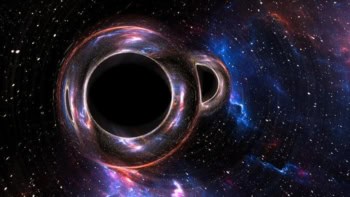
India’s first dedicated astronomy satellite has been launched by the Indian Space Research Organisation (ISRO). The mission took off yesterday on a Polar Satellite Launch Vehicle from ISRO’s Satish Dhawan Space Centre, located in Sriharikota, Andhra Pradesh. Dubbed ASTROSAT, the Rs3.7bn ($70m) mission will study black holes, neutron stars and active galactic nuclei over a wide wavelength range from visible to hard X-rays.
Weighing around 1600 kg, ASTROSAT will operate for five years in a near-equatorial orbit 650 km above the Earth’s surface. It contains a 750 kg payload featuring a suite of five instruments, including imagers and detectors. ASTROSAT will use these instruments for a range of studies, including surveying the skies in the hard X-ray and ultraviolet bands, as well as monitoring the sky for new transients and studying X-ray binaries, active galactic nuclei and clusters of galaxies.
Unmatched capability
Sandip Trivedi is director of the Tata Institute of Fundamental Research (TIFR), which led the construction of three of the probe’s instruments – LAXPC, SXT and CZT. “These will give us a capability in X-ray astronomy that is unmatched, in many ways, globally,” says Trivedi. “We look forward to exciting science results coming out in the near future.”
ASTROSAT will help to replace some of the missing capacity in space-based X-ray observations, particularly following the demise of NASA’s Rossi X-ray Timing Explorer satellite, which was turned off in 2012 after 16 years of operation. “There are currently very few space-based missions able to provide data on transient and variable objects on a regular basis,” David Burrows, an astronomer from Penn State University in the US, told physicsworld.com. “I think that ASTROSAT will be able to contribute significantly to this effort.”
New era
The craft will be controlled by a ground station at ISRO’s Satellite Centre in Bangalore, with data download possible during every visible pass over the city. The satellite is capable of gathering 420 gigabits of data every day. TIFR scientist K P Singh, who is lead scientist for the SXT instrument, says that the mission will “usher a new era in, not just for X-ray astronomy”. “We hope that this will galvanize the astronomy community to use this observatory nationally and globally for the next 5–10 years,” he says. ASTROSAT’s instruments will now be tested for two months before full operation begins.



